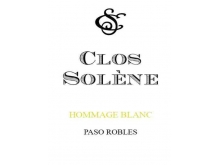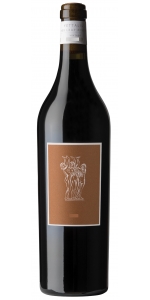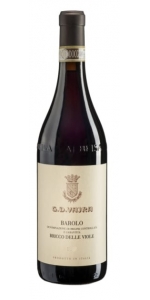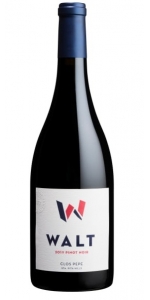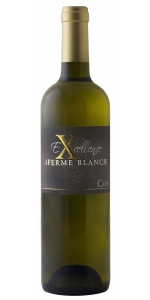Clos Solene Hommage Blanc 2019
| Country: | United States |
| Regions: | California California (Paso Robles) |
| Winery: | Clos Solene |
| Grape Type: | Roussanne |
| Vintage: | 2019 |
| Bottle Size: | 750 ml |
Clos Du Val Yettalil is a Bordeaux blend of Cabernet Sauvignon with Merlot, Cabernet Franc, Petit Verdot and Malbec
The 2019 Yettalil opens with aromas of fresh blackberry, ripe plum, and racy cassis layered with hints of violet, bay leaf, and thyme. Beautifully balanced and elegant on the palate, vibrant acidity and polished tannins give way to a concentrated core of black cherry, vanilla, and cedar. The texture is velvety and plush with a backbone of graphite and dark chocolate that lingers through a long finish.
Review:
The 2019 Yettalil is a blend of Cabernet Sauvignon, Merlot, Cabernet Franc, Petit Verdot, and Malbec. Deep garnet-purple in color, it charges out with energetic notes of crushed black and red currants, warm black plums, and black raspberries, plus suggestions of cedar, violets, and Indian spice with a waft of tree bark. The medium to full-bodied palate is lively and well-structured, featuring firm, ripe tannins to frame the muscular fruits, finishing on a lingering fragrant earth note.
-Wine Independent 95 Points
Boussey Monthelie Blanc Premier Cru Sur La Velle is made from 100 percent Chardonnay.
The name Monthelie comes from Mont Lyoei, mountain of Bacchus. The "Sur la Velle" plot is located on the eastern edge of Monthélie. It borders the Volnay Clos des Chênes Premier Cru to the east. The vineyards here lie on broadly southeast facing slopes with just enough gradient to achieve good drainage.
The Monthelie Blanc Premier Cru Sur La Velle has a beautiful pale yellow color with green reflections.
It is complex and rich with delicious aromas of white flowers, fresh almonds, lemon and minerality.
The finish is long with a very good balance between the excellent ripeness and the perfect amount of acidity.
We recommend this wine with white meat, fish and seafood.
G.D. Vajra Bricco Delle Viole Barolo is made from 100 percent Nebbiolo.
The Barolo Bricco delle Viole shows the signature verticality of its vineyard. The wine is beautifully layered and - while restrained as it’s always the case in the youth of Bricco delle Viole - it also shows a complexity of layers with purple flowers, sweet spices and mineral tones. The palate is noble, with a refined acid spine and profound tannins that promise a long aging potential.
Among the historical vineyards of Barolo, Bricco delle Viole is the highest and the closest to the Alps. It rises from 400 to 480 meters above sea level, on the Western ridge of the village. Its name, “Hill of Violets”, originates from the flowers that blossom early here due to the perfect south exposure. Up above the fogs, Bricco delle Viole enjoys the earliest sunrise and the last sunset every day. Thanks to its vines dating back to 1949 and -now- 1931, a dramatic diuturnal temperature range and this pure light, Bricco delle Viole generates a sophisticated and profound Barolo DOCG of bright aromatics, chiseled tannins and subtle minerality. 2018 is a vintage that shows many nuances of Bricco delle Viole: beyond the signature verticality of this site, the wine offers high tones laced with mineral nuances and plenty of energy and youth.
Review:
A juicy Barolo, with vibrant acidity and a fluid profile that exudes cherry, raspberry, mown hay, mineral and eucalyptus aromas and flavors. Tight yet long, with excellent potential.
#26 Wine Spectator Top 100 of 2023
The last wine poured at my tasting at the winery is the G.D. Vajra 2019 Barolo Bricco delle Viole. With its high vantage point in the hills west of Barolo, Bricco delle Viole is a world apart in terms of soils (with Sant'Agata marl and fossils) and even harvest times. Slow and careful ripening like the kind that characterizes fruit in 2019 renders a very delicate and ethereal expression with floral tones, wild mint and licorice. This organic wine is solid in build and structure. Indeed, Isidoro Vaira remarks that Nebbiolo tannins have changed since the 1970s and 1980s.
-Wine Advocate 97+ Points
Jeweled in appearance, the 2019 Barolo Bricco Delle Viole may be the best wine I have tried yet from Vajra. Its gorgeous and alluring perfume of fresh roses is followed by a Burgundian, elegant red with incredible length and no harsh edges, fine and present tannins, and beautiful, graceful concentration. It is drinking well now, and I will be trying to get my hands on as much of this as possible. Drink 2025-2045.
-Jeb Dunnuck 97 Points
Royet Rully Blanc Clos de Bellecroix is made from 100% Chardonnay.
Intense light yellow color - nose evokes ripe yellow fruit, with a hint of fresh wood and vanilla - round, gourmet palate with hints of smoke and vanilla.
Pair with white meat or fish with cream sauce, foie gras.
Walt Clos Pepe Pinot Noir is made from 100 percent Pinot Noir.
Deep ruby in color, the wine carries luscious fruit aromas of blackberry preserves and dark cherry, infused with exotic notes of spice, black tea and pomegranate. The palate opens to a dense and velvety texture laced with flavors of barrel char and salinity, leading to a structured and focused finish.
Review:
Big and rich, with luscious spiciness to the plush dark fruit and berry flavors that are supported by medium-grained tannins. There's plenty of creamy and toasty accents on the open-textured finish.
-Wine Spectator 93 Points
Another Sta. Hills release, the 2019 Pinot Noir Clos Pepe Vineyard saw 10% stems and 10 months in 40% new French oak. It's a little more focused and firm, with classic ripe black raspberry, red plum, and cherry fruits as well as orange blossom, spice, and floral nuances. It too is medium-bodied, textured, and beautifully balanced.
-Jeb Dunnuck 93 Points
- The Clos Pepe Vineyard was founded in the late 1980s by Steven and Kathy Pepe. The vineyard is located just east of Lompoc in the Santa Rita Hills appellation. The 2019 ‘Clos Pepe’ revels in its aromatic range from peat moss and pipe tobacco to bright red fruits and wild blackberry. The palate is dense and fresh with beautiful red florals alongside orange rind with sandy soil undertones. Gorgeous now, this has a long way to go in the cellar.
-Owen Bargreen 95 Points
Ferme Blanche Cassis Blanc Excellence is made from 50% Marsanne and 50% Clairette.
On the nose, white fruits, citrus zest, hint of vanilla. Velvety well balanced mouth of ripe fruits and minerality.
Pair with trout, Scallop, or better yet lobster would complement this wine perfectly.
Hommage Blanc is made with 75% Roussanne and 25% Viognier. 2019 was the first vintage with 20% of the fruits coming from the Estate, the rest comes from James Berry, Glenrose and Adelaida. You will love this wine because of its perfume and its mouthfeel. Aged in oak for 6 months, it is elegant with a nice texture.
The wine has a refined bouquet of honeysuckle and some tropical notes. Nicely balanced, it has a great texture, a lingering finish with a beautiful minerality. To describe it I would use the word elegance. A beautifull white wine that can be aged for 8 years with an optimum drinking window between 3 to 6 years and ideal temperature to serve at 52F.
Review:
"The flagship white, the 2018 Hommage Blanc is a deeper, richer white based on 75% Roussanne and 25% Viognier that was brought up in 30% new French oak. Lots of white peach, honeysuckle, orange blossom, and hints of citrus all emerge from the glass, and it offers medium to full body, hints of spice and brioche, a rounded, supple texture, and outstanding length. It's going to shine on the dinner table. I expect it to put on weight with a year in bottle and keep for over a decade."
- Jeb DUNNUCK (October 31st 2019), 93+pts
Born and raised in the Southeast of France, Guillaume comes from a family of grape growers and winemakers. After 24 years in Narbonne, he moved to Bordeaux. Both regions famous for their wines are also very different from each other. It requires some grape growing and winemaking experience to switch from one to the other, such as different climates, soil types, vine illnesses and more. But life is full of surprises. Not convinced he wanted to make wine in Bordeaux, he took a harvest internship at L’Aventure in Paso Robles. The same bolt of lighting that he felt for Solène, struck again. He fell in love with the soil and terroir of Paso Robles. What was supposed to be a 3-month harvest internship, turned into 6 months, and he was offered the position of Assistant Winemaker. While working for L’Aventure, he worked day and night on his own project - to launch his very own brand. In 2007, Clos Solène was born.
When Guillaume and Solène acquired the estate in January of 2017, the existing vineyard was planted in 1998 onto vigorous rootstock. The rows were planted a little wider than Guillaume would have planted, but he felt that it was a great place to start, especially having 20-year-old vines in place, which is considered “old vines” for this area. After testing to make sure the vines were clean of any and all viruses, Guillaume decided to re-graft the whole 8 acres and turn the plot into a nursery for future planting.
Robert Parker on Clos Solene:
"Clos Solène was founded in 2007 by Guillaume and Solène Fabre. At present, they make about 2,500 cases a year but have recently purchased their own estate and hope to grow the brand to around 4,000 cases. Guillaume, a native of the Languedoc-Roussillon in France, has begun planting rootstocks and grafting over vines and is experimenting with Côte-Rôtie-style training for his Syrah vines. Currently, most of the fruit is purchased, but the pair hopes to dial back to only 30% purchased fruit as their own vines come online. Guillaume says he wants his wines to have “a common denominator of elegance and perfume,” and indeed the wines are much more restrained than is usual for Paso. 2017 with its heat spikes was especially challenging here. “It was 105 degrees for two straight weeks,” Guillaume recalls. “We picked a bit earlier, used less new oak, less stems and less extraction. We did triage picks and then sorted very heavily. We lost about 30% to 40% of production on the sorting table because we let go of anything impacted by that heat. - Erin BROOKS"
- Robert Parker's Wine Advocate (February 2020)
- back
Far Niente Post & Beam Napa Cabernet Sauvignon is made from 100 percent Napa Cabernet Sauvignon.
At Post & Beam, we make wines of pure expression, built on generations of hands-on experience producing acclaimed Cabernet Sauvignon and Chardonnay. Backed by the expertise and legacy of Far Niente Wine Estates, we use time-honored techniques to make exceptional wines that can be enjoyed upon release. Our expertise of winemaking at the highest level has enabled us to create wines that seamlessly unite tradition and modernity.
The 2022 Post & Beam Cabernet Sauvignon displays seductive aromas of briar patch and plum sauce on the nose before leading onto a palate that is well-structured yet elegant. Round and textured on the palate, the entry is layered with cassis and blackberry. The finish exudes vanilla, mocha, and cocoa flavors alongside resolved tannins.
Review:
Richly appointed, with dark blue and purple fruit and a plush mouthfeel. Notes of plum liqueur and freshly roasted coffee grace the palate as dark chocolate and anise entwine with the wine's well-defined structure and satin-lined tannins. Spiced red tea and sandalwood engage with more chocolate on the finish.
-Tasting Panel 95 Points
A complex Carignan mixing black fruits and spices. Intense color and fine structure with rounded tannins and volume in the mouth.
RS: 2g/L
The fruit was carefully sorted to ensure only healthy, ripe grapes were vinified. Traditional fermentation took place in stainless steel tanks at controlled temperatures of 28°C with selected yeasts. Remontage or pump overs took place periodically to oxygenate the wine and extract tannins. A short post-fermentation maceration took place to extract color, flavor and impart structure to the wine. Ageing in stainless steel preserved the integrity of the pure fruit character. The wine was lightly filtered before bottling.

